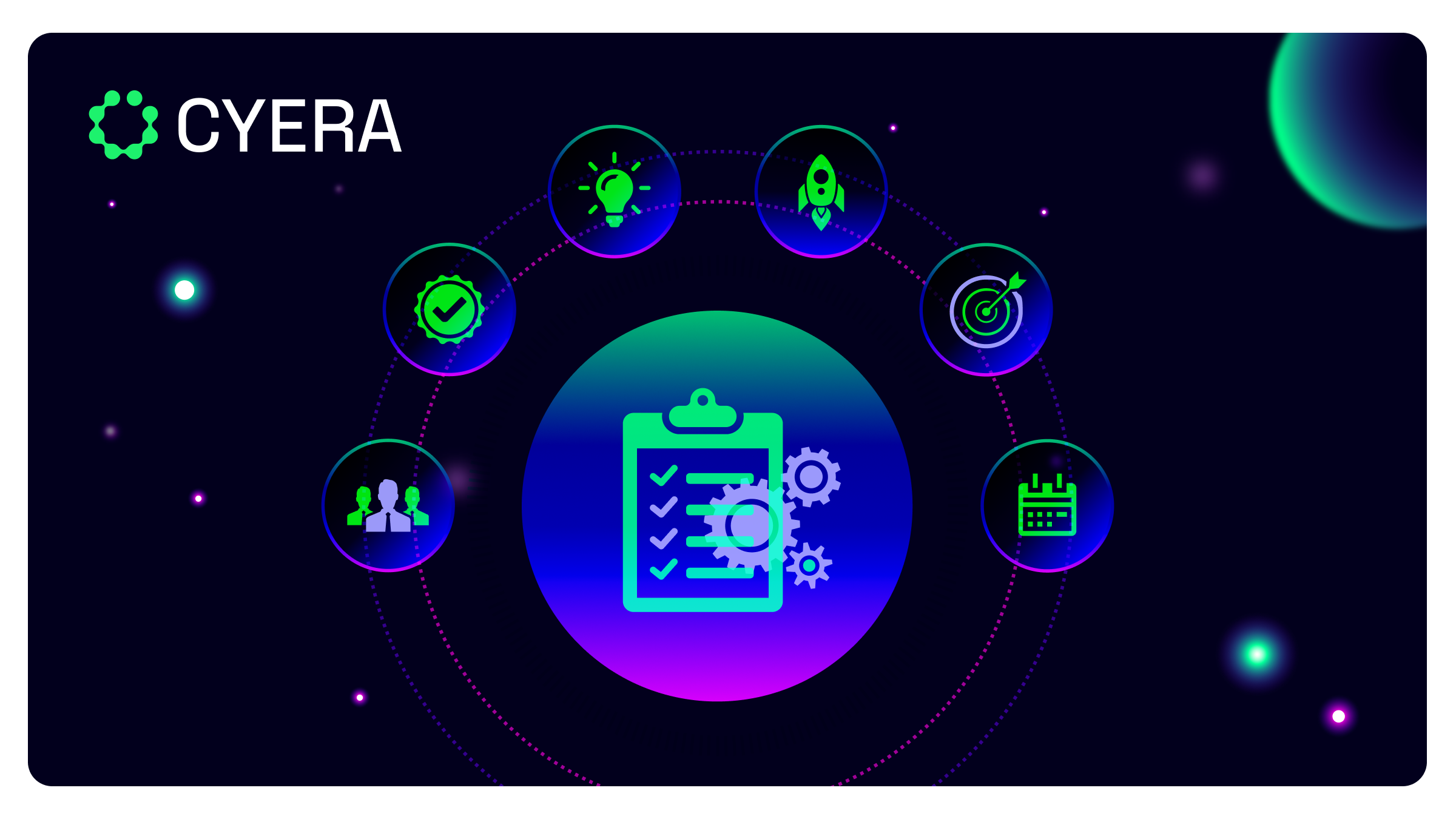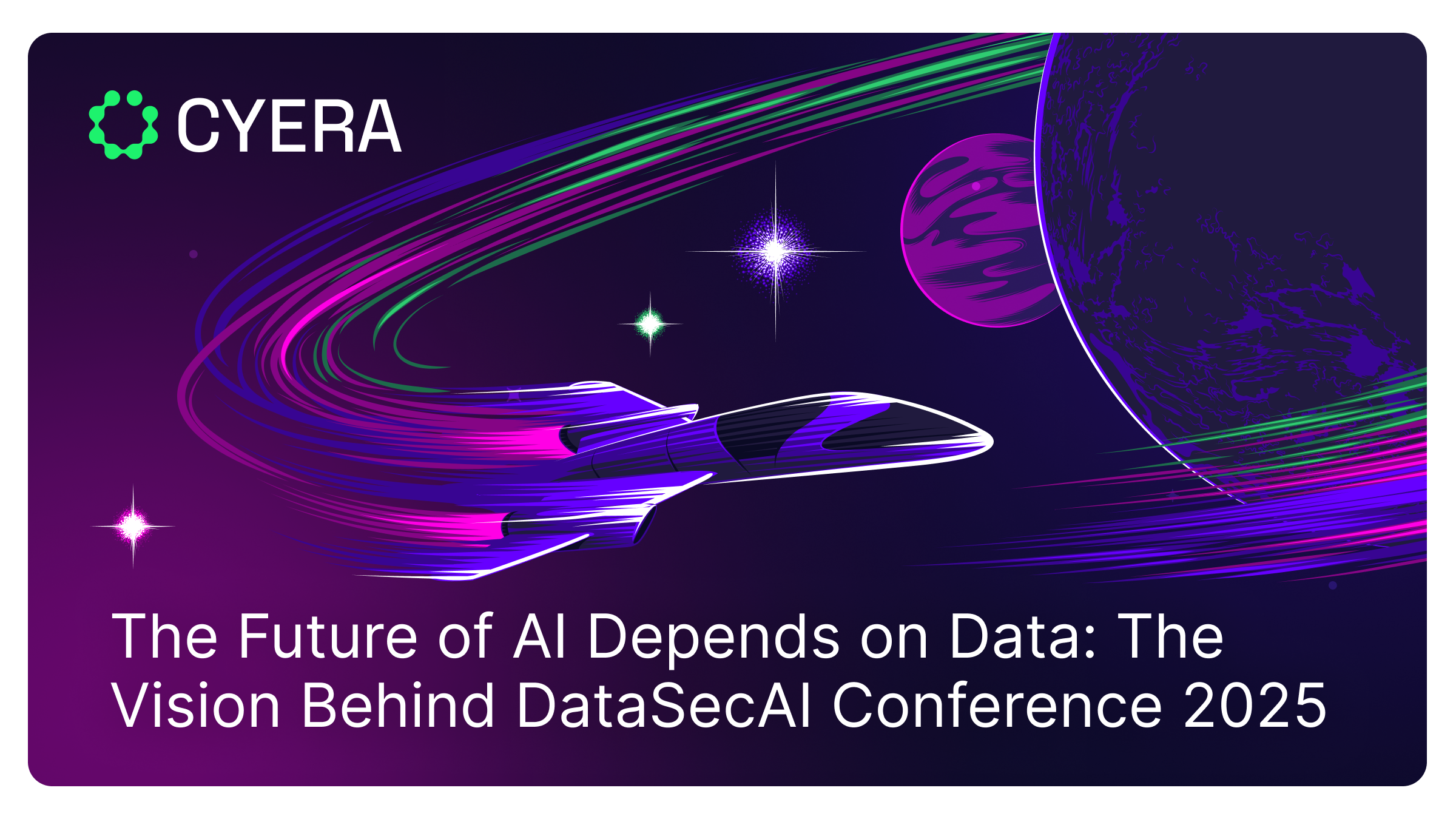Data Governance Framework: Examples & Best Practices
.avif)
Data is everywhere, but without clear rules around how it’s managed, it quickly becomes a liability.
This is why a strong data governance framework is a must-have. This "rulebook" for collecting, storing, and using data helps ensure consistency, supports compliance with regulations like GDPR and HIPAA, and reduces the risk of data misuse. Just as importantly, it aligns different teams, like engineering, security, legal, and business, around a common understanding of data responsibilities and collaboration.
At Cyera, we help organizations build strong data governance frameworks. Our specialized tools make it easier to see what data you have, who can access it, and what risks might exist.
This article breaks down what data governance frameworks are and why they matter, and provides practical examples to help you build or improve your own approach.
What Is a Data Governance Framework?
A data governance framework is simply a set of rules, processes, and responsibilities that explain how your organization handles its data. Think of it as an instruction manual that tells everyone exactly how data should be treated from the moment it enters your company until it's deleted.
This framework isn't just about technology. It's about clearly defining who owns what data, who can use it, how it should be protected, and what standards it needs to meet.
The core goals of any data governance framework are:
- Ensuring data integrity: Keeping your data accurate, consistent, and trustworthy across systems.
- Safeguarding data and privacy: Making sure sensitive information is handled according to internal policies and external regulations.
- Granting business value: Helping teams find, understand, and use data effectively without compromising compliance or quality.
A good governance framework removes friction, helps prevent conflicts between departments, saves you from regulatory missteps, and helps you use your data strategically and efficiently.
The Importance of Data Governance Frameworks
Without clear governance, data problems multiply quickly. When each department follows its own rules, you end up with inconsistent quality, blind spots where no one is responsible, and processes that don't work together.
These problems create real business headaches. Teams waste time arguing about whose numbers are right. Reports show different results depending on who created them. And data that should connect across systems doesn't match up.
The stakes get even higher when you consider legal and reputational risks. Mishandling customer data can lead to huge fines under laws like GDPR and CCPA. A single major data breach can damage your brand for years. Companies have paid millions in penalties and lost customer trust because they lacked proper data controls.
A solid governance framework prevents these problems by creating clarity about how data should be handled, who's responsible for it, and what standards it needs to meet.
Key Benefits of a Data Governance Framework
Data Democratization
A well-implemented data governance framework empowers employees at all levels to access and utilize data effectively. Its protocols and access controls let your organization foster a culture where data-driven decision-making is the norm.
Standardized & Trustworthy Data
Consistency is crucial in data management. Naming conventions, shared data dictionaries, and clear tracking plans help ensure that metrics mean the same thing across tools and departments.
This uniformity builds trust. When people know the data is reliable, they make decisions with confidence instead of second-guessing the numbers.
Compliance with Regulatory Requirements
Compliance readiness is a critical component of any data security plan. From GDPR, CCPA, and HIPAA to industry-specific standards and data residency laws, privacy regulations are only getting stricter.
A strong governance framework helps you navigate these regulations by clearly documenting what data you collect, where you store it, how you protect it, and who can access it. On top of being very practical, this documentation is often legally required.
Improved Business Performance
Reliable and well-governed data is the cornerstone of informed decision-making. When teams have access to clean, consistent, and reliable data, performance improves across the board.
Marketing teams spend less time validating reports. Product teams make smarter decisions based on user behaviour. Finance and strategy leaders can forecast more accurately. Over time, these efficiencies translate into real ROI.
How Do Data Governance Frameworks Work?
A data governance framework outlines who makes decisions about data, what processes guide those decisions, and which tools support them. The best-known models, like the one from the Data Governance Institute (DGI), offer a helpful structure for building something that actually works in practice.
Ownership
Every data governance framework starts with ownership. Your framework needs to define exactly who's responsible for what data and decisions.
Most frameworks include roles like:
- Data owners who have ultimate accountability for specific data sets
- Data stewards who handle day-to-day management and quality
- A governance committee that sets policies and resolves issues
- Executive sponsors who provide resources and support
These roles make sure that standards are followed, changes are documented, and quality issues are handled quickly.
Goal-Setting
Your governance framework needs clear goals tied to business outcomes. This ensures your governance framework delivers real value instead of just creating more bureaucracy.
For example, a company might want better sales reports or fewer compliance risks. By setting targets, like saving time or cutting errors, teams know what they’re working toward and can measure success.
Performance Monitoring
Good frameworks include regular checks to ensure data meets your standards. This monitoring catches problems early and shows where improvements are needed.
Processes for approving changes, fixing issues, and checking data quality keep everything on track. For example, who decides on new data names? How do you know data is still good months later? Monitoring answers these questions and helps you spot patterns that need attention.
Approved Tech
While technology alone can't solve governance problems, the right tools make implementation much easier. From data cataloguing and metadata management tools to platforms for access control, encryption, and breach detection, your tech needs to align with your governance goals. You want systems that enforce the policies you’ve agreed on without slowing teams down.
Collaboration Standards
Finally, a good framework creates clear rules for how teams work together with data. These standards prevent confusion and conflict.
Effective collaboration requires:
- Shared vocabulary so everyone uses the same terms
- Clear processes for requesting access to data
- Standards for how data is shared between teams
- Regular communication about changes to data systems
When everyone follows the same playbook, collaboration becomes smoother and more productive.
Data Governance Framework Models & Examples
Different organisations need different models, depending on their size, structure, and goals. Most models fall into a few common categories, each with its own way of making decisions and assigning responsibilities.
- Top-Down: Management defines data governance policies and standards, which are then implemented throughout the organization. This approach works well in highly regulated industries and companies with strong central control. It ensures consistency but may face resistance if employees don't understand the reasoning behind the rules.
- Bottom-Up: Teams develop their own governance practices based on their needs, which then influence broader company standards. This approach often gets better buy-in from users but can lead to inconsistency across the organization if not carefully managed.
- Center-Out: A central team, often comprising data experts, develops governance standards and practices that are then shared with other teams. This model offers a good balance between central control and room for local flexibility.
- Silo-In: Each department manages its own data independently and develops its own rules. These are later brought together to create a shared governance approach. This can be a practical starting point for organizations with very different departmental needs, but it requires strong coordination to eventually bring everything together.
- Hybrid: Most organizations end up with some mix of these models, adapting their approach to fit different types of data and business units. For example, financial data might follow a strict top-down model while marketing data uses a more flexible approach. This model is common in companies that are scaling fast or working across multiple markets.
Notable Data Governance Frameworks
Here are some tried-and-tested structures that are widely recognised:
- DAMA DMBOK Framework: Created by the Data Management Association, this framework places data governance at the center of nine key data areas like quality, security, and architecture. It’s ideal for companies that want a full view of how data is managed across the business.
- DGI Framework: The Data Governance Institute’s model is more hands-on. It’s a step-by-step guide to building a governance program from the ground up. Great for organisations that are just getting started or want something practical.
- PwC Enterprise Data Governance Framework: Designed for large enterprises, this model covers everything from data strategy to lifecycle management and stewardship. It’s especially useful for complex data environments where control and clarity are critical.
Which Model Is Right for You?
- Small and mid-sized companies often do best with simpler, bottom-up or hybrid approaches that don't create too much overhead.
- Large enterprises often benefit from top-down or centre-out models to ensure consistency across departments.
- Highly regulated industries usually lean towards more structured frameworks like DAMA or PwC’s model.
- Organisations with mature data practices might combine models and tailor governance to fit their specific culture and needs.
Frequently Asked Questions (FAQs)
What are the components of a data governance framework?
The core components include:
- Ownership: Clear roles and responsibilities, like data stewards and governance leads.
- Goal-setting: Aligning data practices with business outcomes like reducing risk or improving reporting accuracy.
- Approved technology: Tools that support secure data storage, processing, and monitoring.
- Collaboration standards: Agreed ways for teams across legal, IT, and operations to use data.
How do you create a data governance framework?
Start by understanding your current data situation and biggest pain points. Then:
- Form a dedicated data governance team.
- Set clear goals and key metrics (KPIs).
- Define policies, roles, and processes.
- Choose the right tools to support it all.
- Communicate and iterate.
Remember, governance should evolve with your business.
What are the different data governance framework models?
- Top-Down: Exec-led, policy-driven.
- Bottom-Up: Team-led, organically adopted.
- Center-Out: Built by a core team and shared outward.
- Silo-In: Starts in departments, unified later.
- Hybrid: A tailored mix of the above.
What is the difference between data governance and data management?
Data governance defines the rules, responsibilities, and structure, while data management is the day-to-day execution, like maintaining data quality, storage, and access.
How does a framework drive better business decisions?
When data is well-governed, it’s accurate, accessible, and trustworthy. That means less time second-guessing numbers, fewer costly mistakes, and more confidence in every decision. This goes from marketing strategy to risk mitigation.
Learn More About Building Your Data Governance Framework
Ready to take charge of your data? Cyera's Unified Data Security Platform helps you see where your data is, who can access it, and how to keep it safe.
Check out these resources:
- Data Access Governance Glossary: Understand the principles of Data Access Governance, including key components like data discovery, classification, and identity access management.
- Data Visibility Use Case: Learn how to enhance your existing data governance solutions with enriched metadata and detailed classification insights, and find datastores you may not know exist.
- Four Levels of Data Classification: Learn how to categorize data based on sensitivity and the impact of its exposure, aiding in effective risk management and regulatory compliance.
Want to see Cyera in action? Request a demo today to start building a stronger data governance framework.
Gain full visibility
with our Data Risk Assessment.



